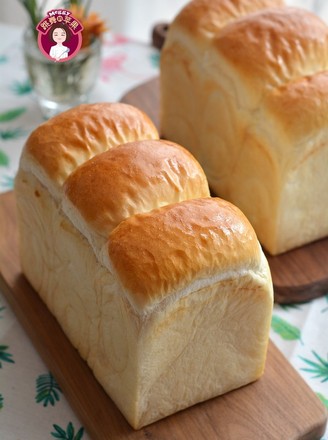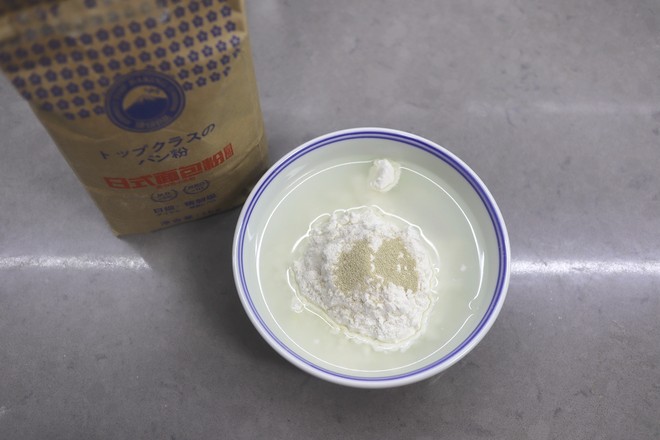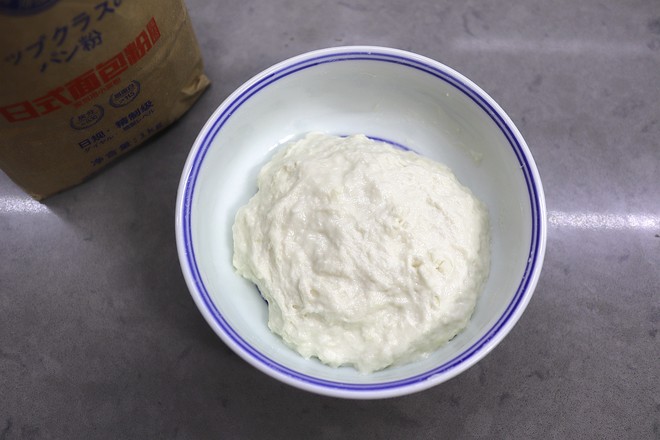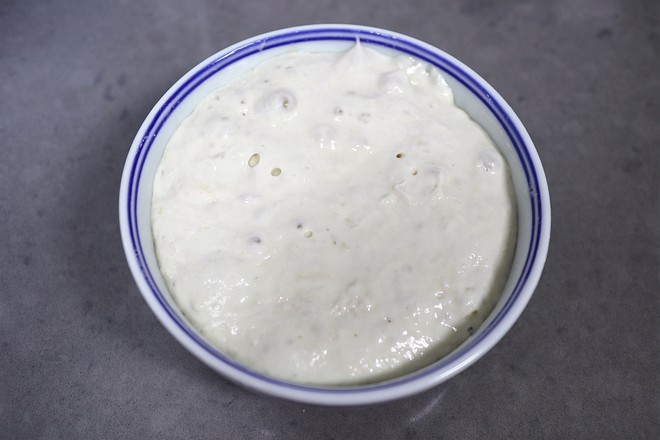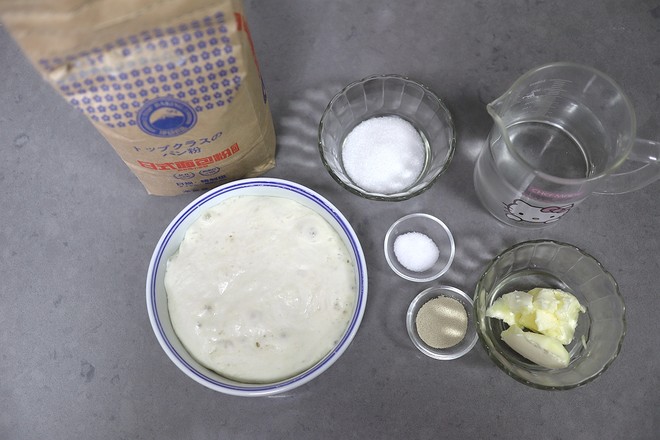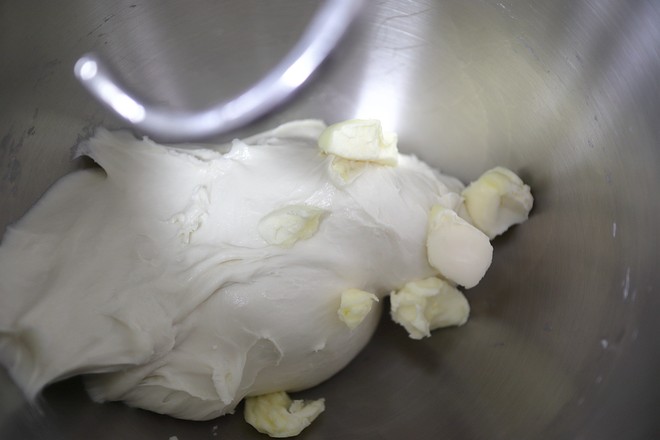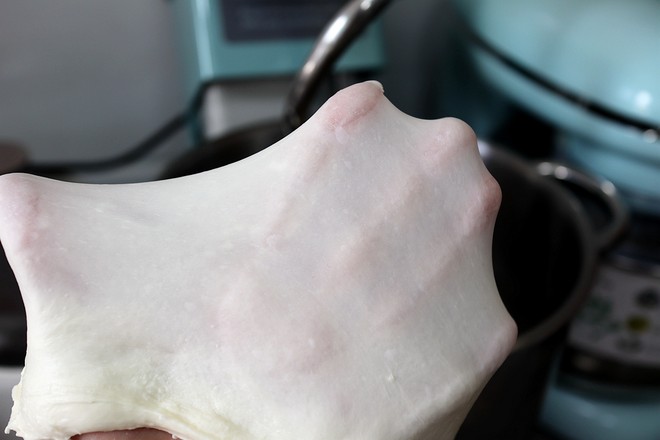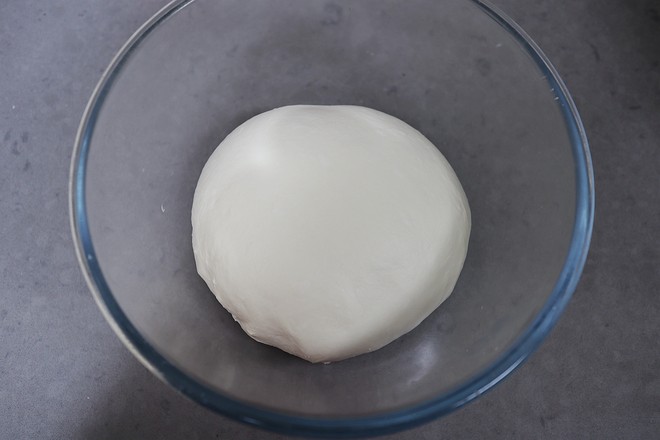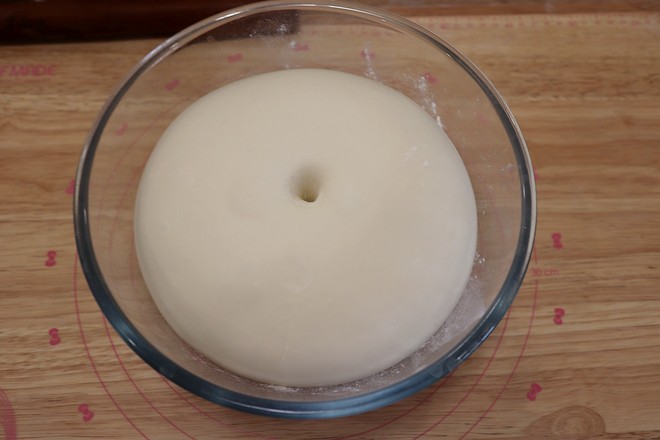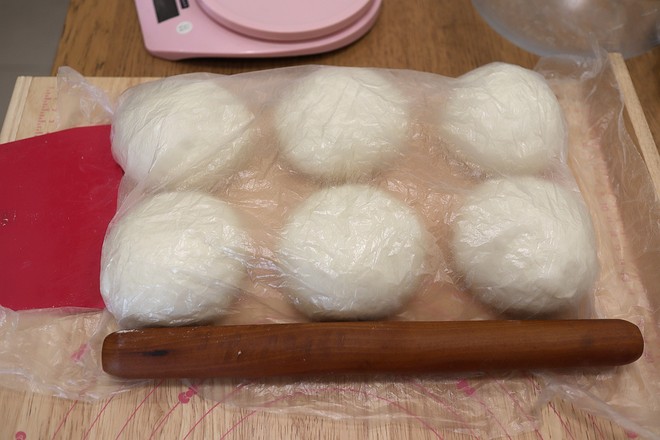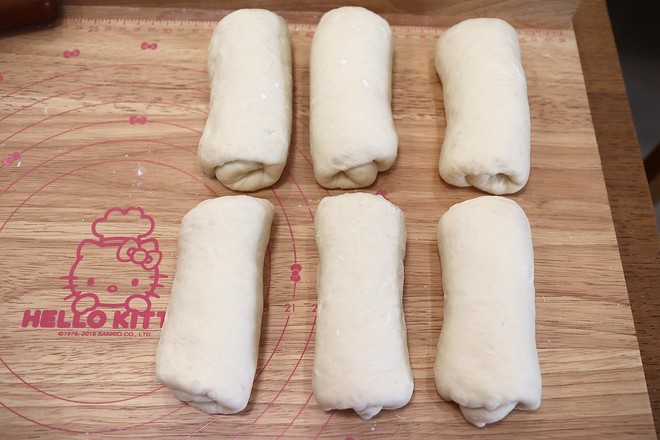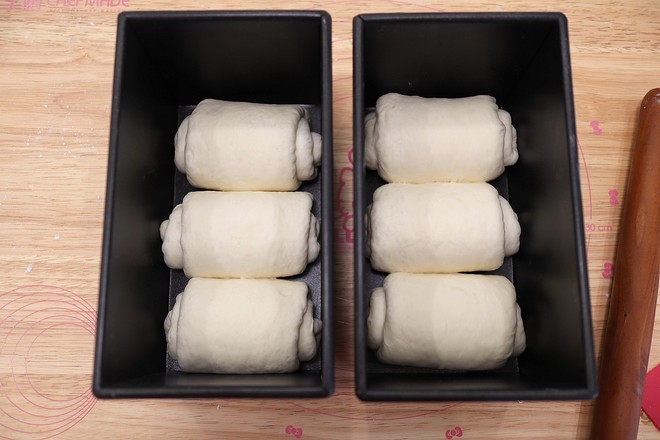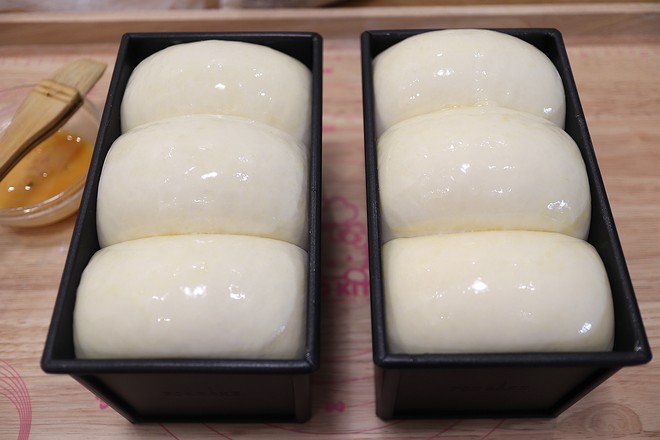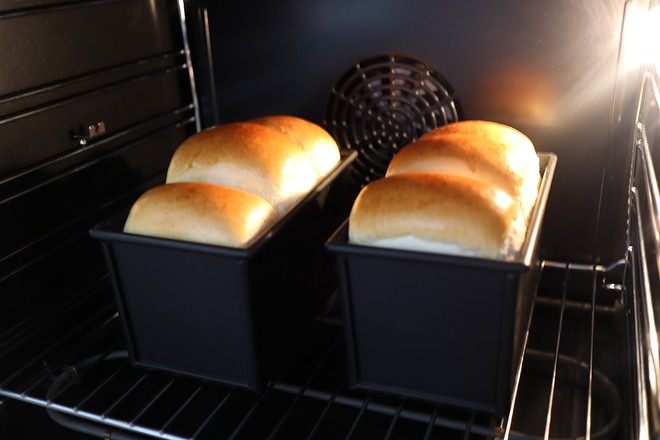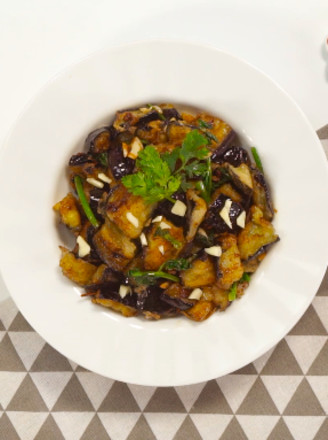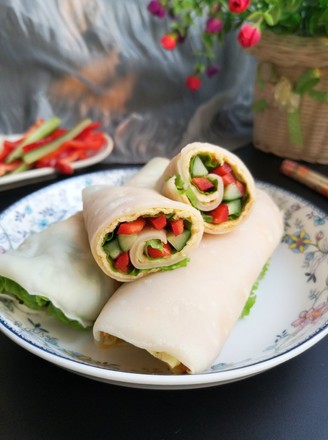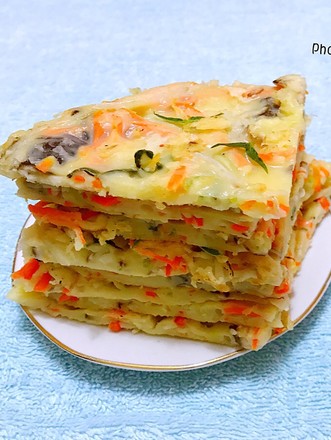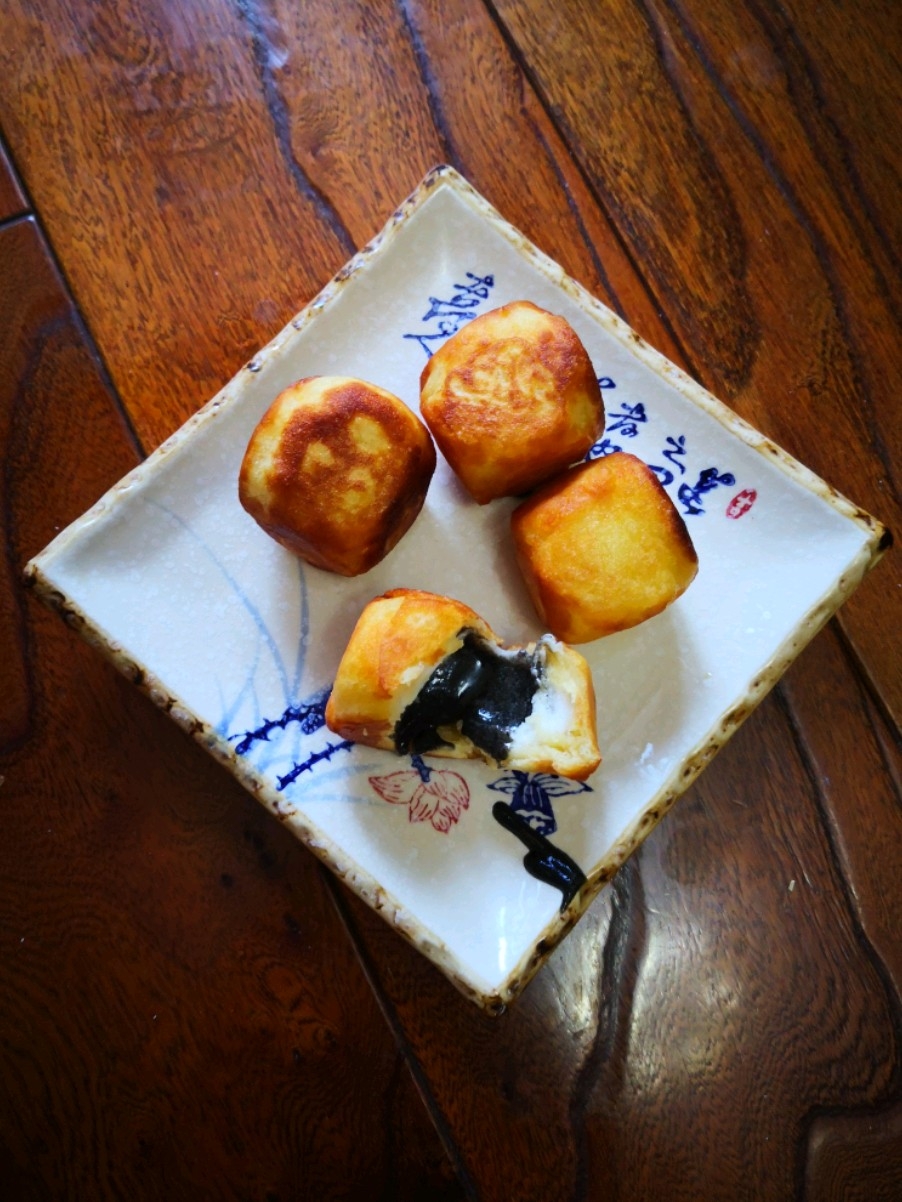Polish Low-sugar Original Toast
1.
Make a Polish seed a few hours in advance: 100 grams of bread flour, 1 gram of dry yeast, and 100 grams of cold water; the amount of flour of the Polish variety is about 25% of the main dough flour. The upper and lower levels can be adjusted slightly, but not too much;
2.
Stir the ingredients evenly with chopsticks, and ferment the Mongolian plastic wrap in a warm and humid place to 2-3 times its size; it can also be fermented at room temperature for 30 minutes and then transferred to the refrigerator to ferment for 7-14 hours;
3.
There are large and small pores on the surface of the fermented Polish starter, which makes you feel ready to go. If you pick it up, you can see the beautiful large and small pores and long brushing at the bottom;
4.
The main dough materials and Polish starters are ready; only 20 grams of white sugar is added, which can be increased if you like sweet bread; the water is 4 degrees cold water in the refrigerator for long-term refrigeration, or you can use cold water to soak ice cubes;
5.
All the ingredients except butter are poured into the kneading bucket together with the Polish dough. The water absorption rate of flour is different, so the amount of liquid can be reserved about 30 grams. If you knead the dough by hand, the amount of liquid will be less; I actually With 250 grams of water, the dough is very, very soft; first stir at a low speed to form a dough, and then at a medium speed for about 5 minutes, the dough can be pulled out of the thick film and then add butter;
6.
First, use a low speed to completely melt the butter into the dough, then turn to a medium speed to beat for 8-10 minutes. The dough is soft and smooth and does not stick to the wall of the basin. Pulling a piece of dough can hold out a transparent and elastic film;
7.
Take out the dough, round it up, put it in a round bowl, and cover it with plastic wrap;
8.
Now the room temperature is between 28-30 degrees, so it is directly fermented at room temperature. The time is about 2 hours. Adjust the time according to the state of the dough. The dough is twice the original size. Dip your fingers in the flour and poke a hole on the top of the dough without collapsing. , With a slight retraction;
9.
Pour the dough on the chopping board, tap it gently to exhaust, weigh into 6 equal parts, knead round separately, cover with plastic wrap and relax for 10-15 minutes; press the dough with fingers to loosen in place if there is no rebound;
10.
Roll out the loose dough into an oval shape and fold it into 3 folds; the cling film relaxes for 15-20 minutes, and the dough is loosened in place without rebound when pressed by your fingers;
11.
Roll the loose dough with the smooth side up and roll it to a length of 30 cm, then turn it over so that the smooth side is facing down, so that it will be exposed on the surface when rolled up; readjust the dough sheet to 30-40 cm in length. Roll up and down into a roll; stack the rolled noodles in a 450g low-sugar toast mold; place them in a warm and humid place for secondary fermentation;
12.
When the dough rises to 9 minutes full, brush the egg liquid on the surface; the oven begins to preheat 190 degrees;
13.
Put the raw toast into the middle and lower layer of the pre-heated oven, heat 170, lower 190, 30 minutes, adjust the temperature and time according to the actual situation of your own oven; if you use an ordinary toast box, in the case of temperature preparation The temperature can be adjusted to 180 for upper heat and 190 for lower heat, and the time is 35 minutes;
14.
Put the raw toast into the middle and lower layer of the pre-heated oven, heat 170, lower 190, 30 minutes, adjust the temperature and time according to the actual situation of your own oven; if you use an ordinary toast box, in the case of temperature preparation The temperature can be adjusted to 180 for upper heat and 190 for lower heat, and the time is 35 minutes;

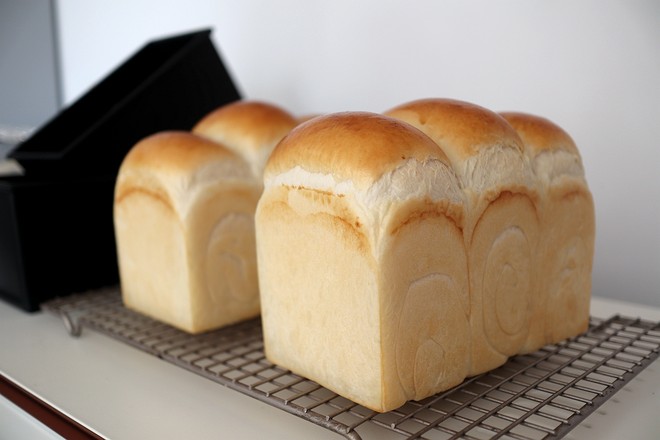
Tips:
1. The water content of my toast is relatively high, and the new “top-baked good” Japanese bread flour I use has a relatively high water absorption rate; the water absorption rate of different flours is different and the humidity of the environment when kneading is different, so it can Reserve 30 grams of water and decide whether to add water depending on the state of the dough; milk and eggs can also be used as liquids, but because these two are not pure water, the amount is more than the amount of water;
2. I use a low-sugar toast mold, which is shorter than a normal toast box. Sugar-free or low-sugar toast can be quickly and evenly colored, and the rise is good; if you use a normal toast box, it is recommended to follow the taste To increase the amount of sugar;
3. The baking temperature and time are adjusted according to the material of the oven and mold.

